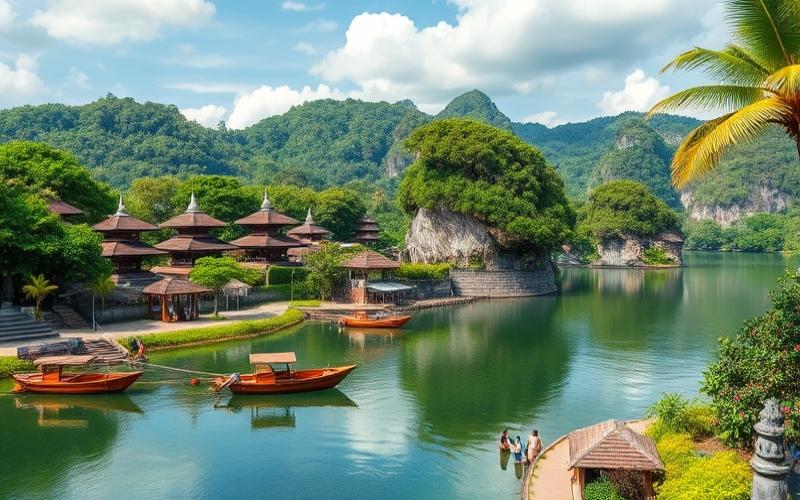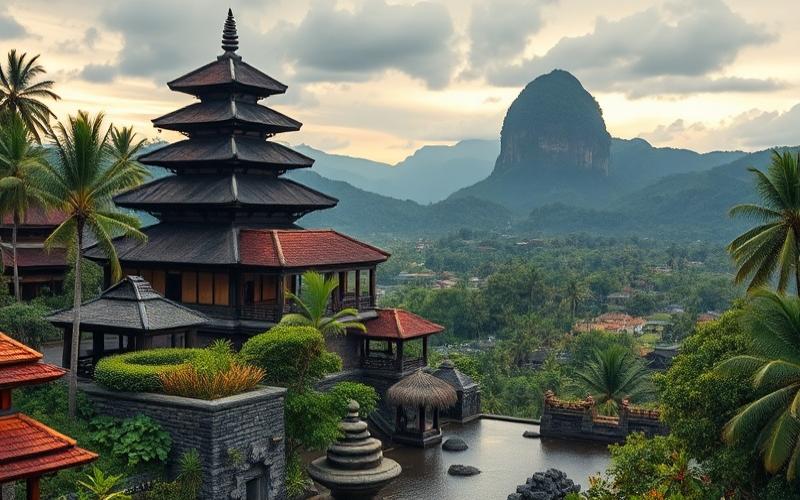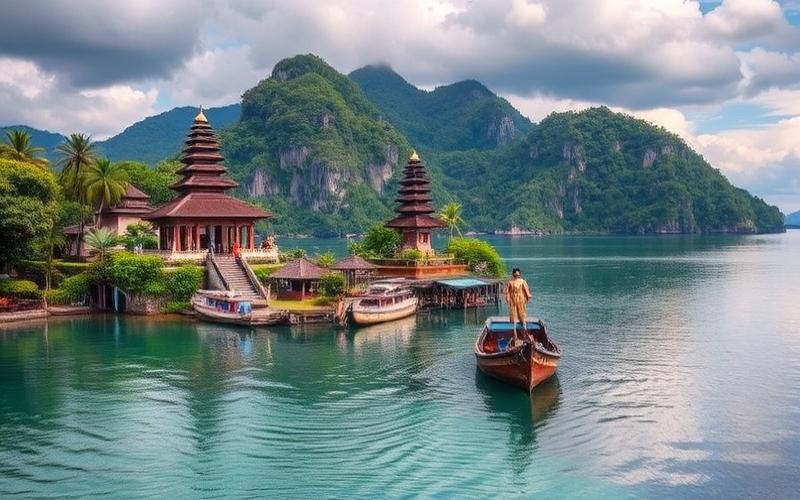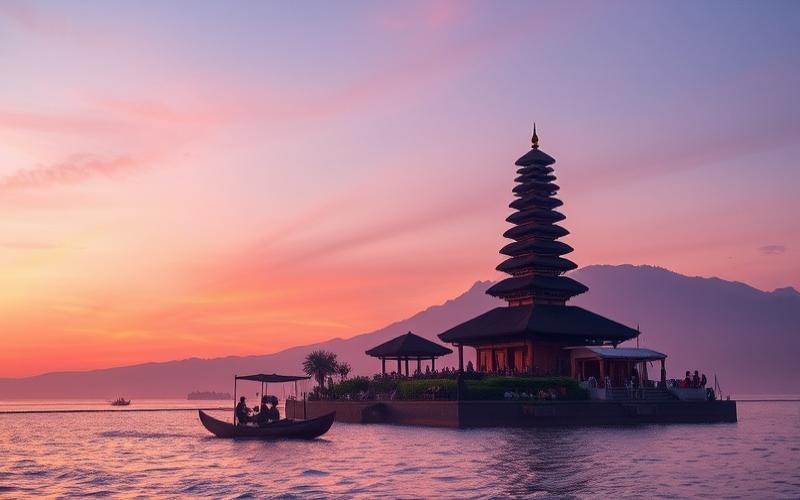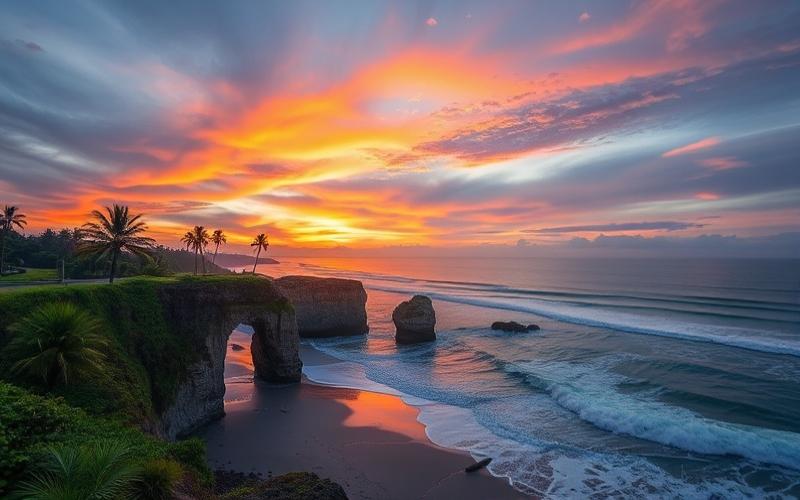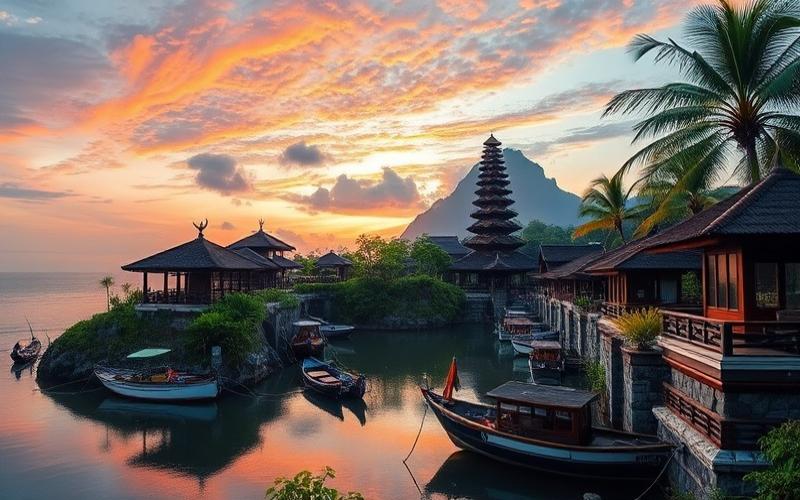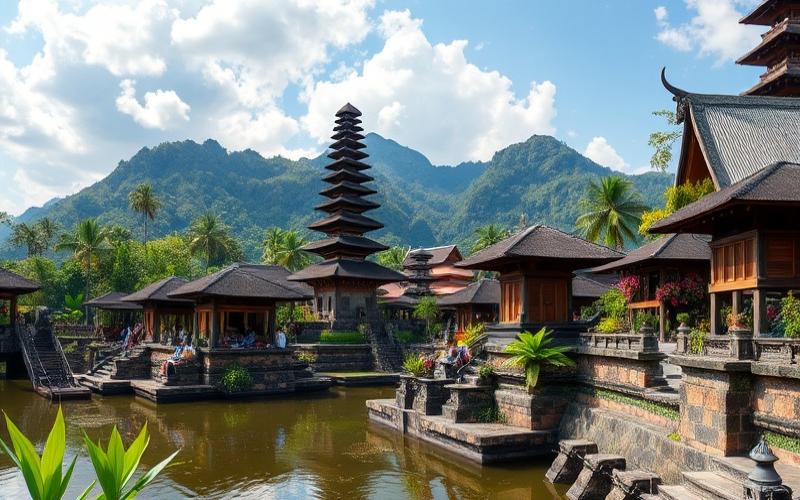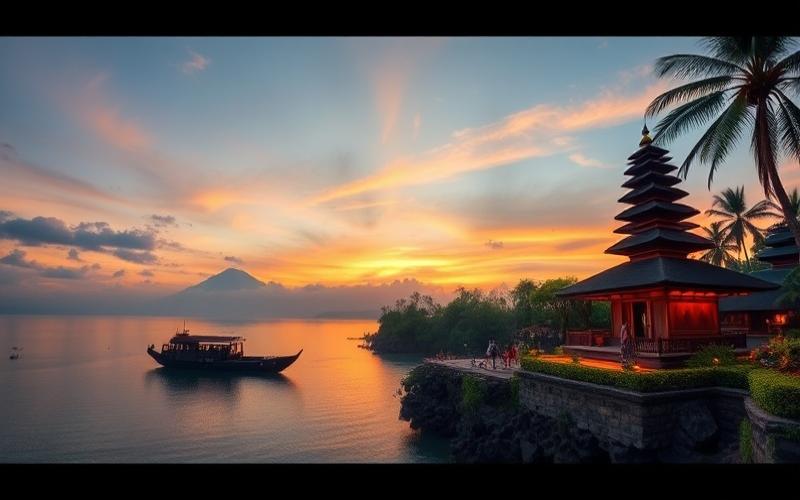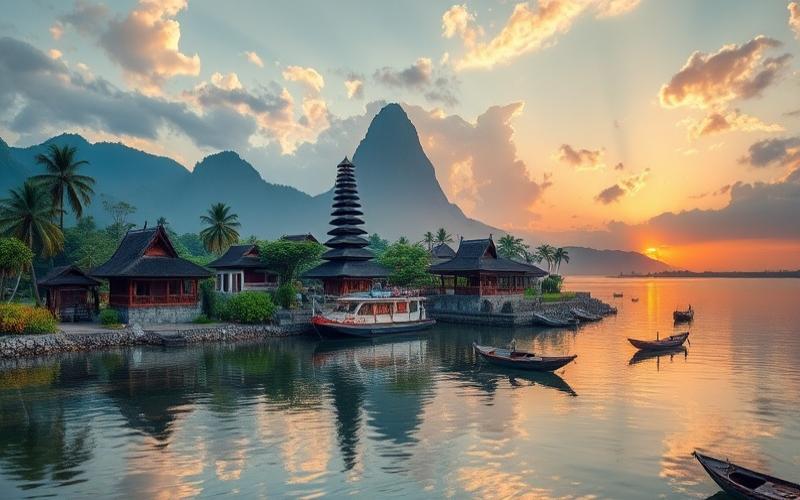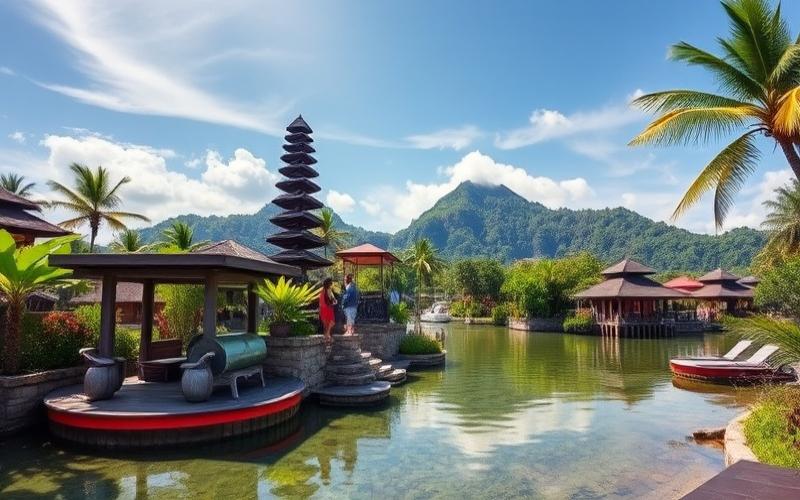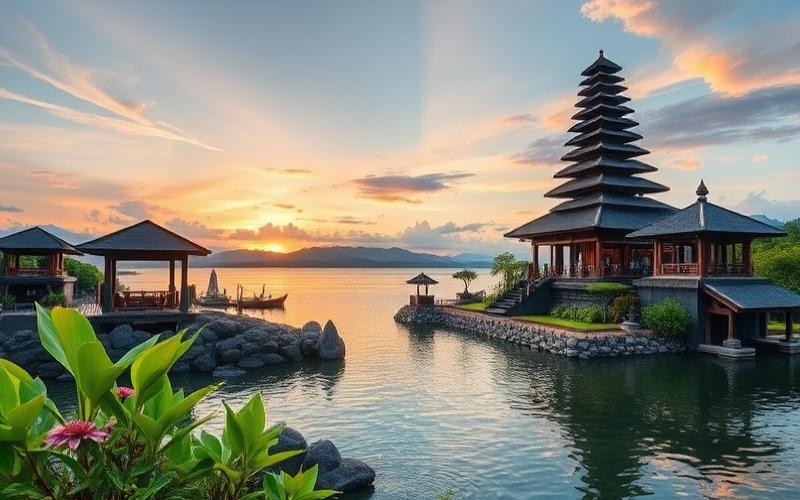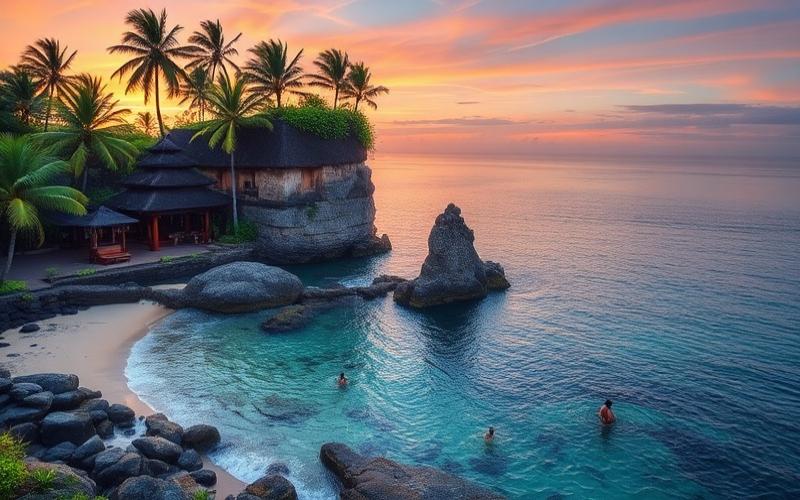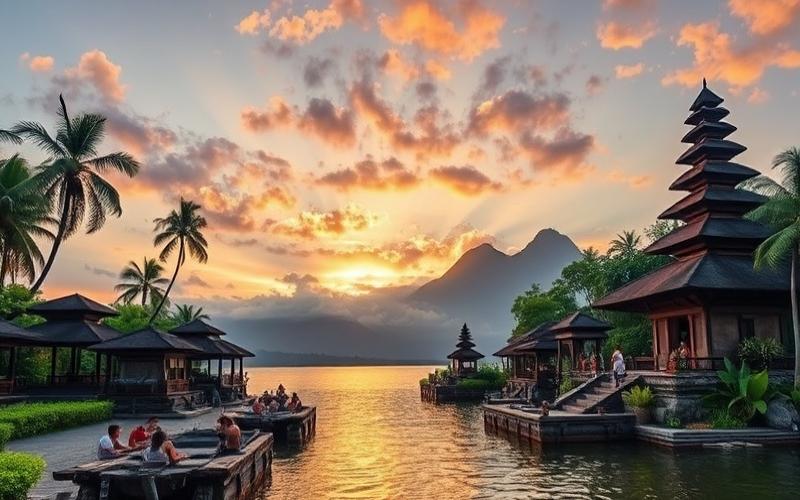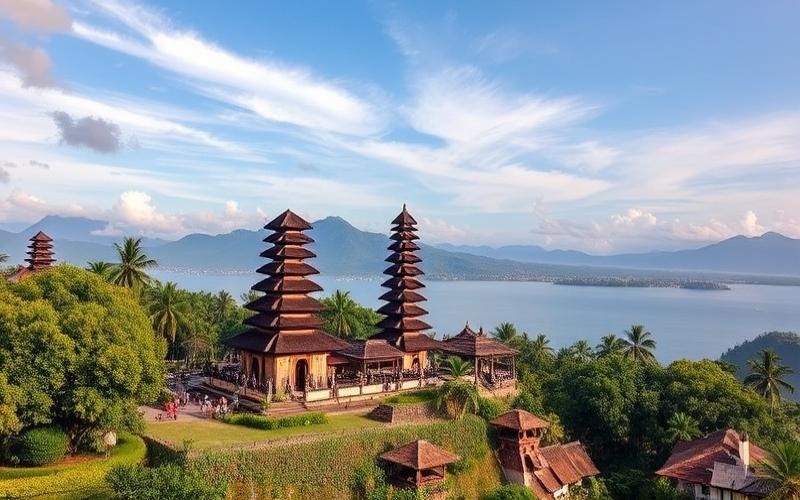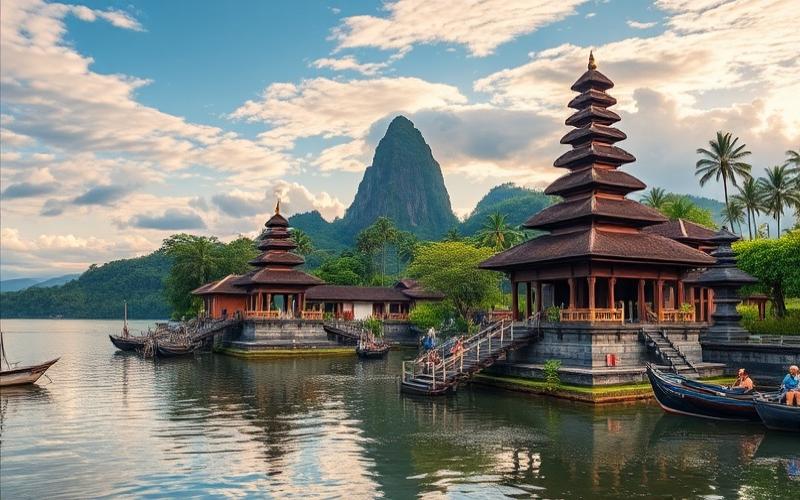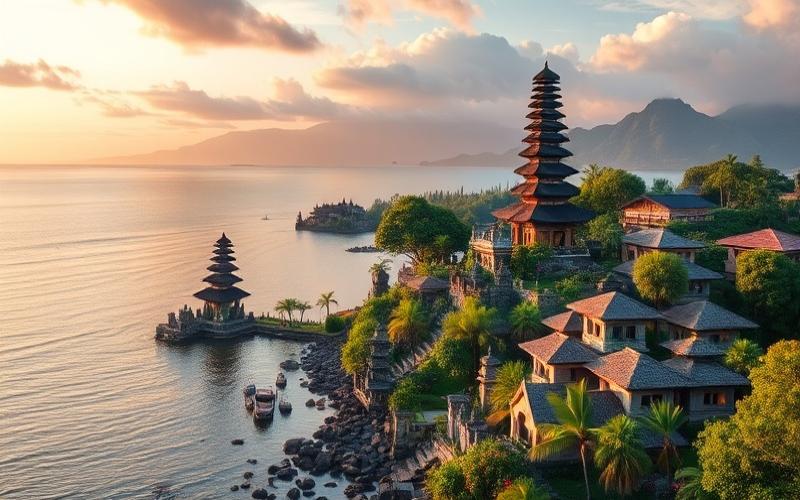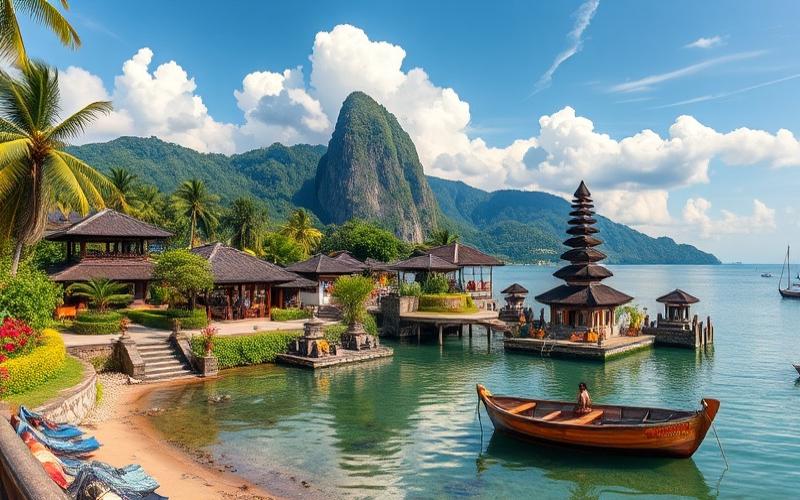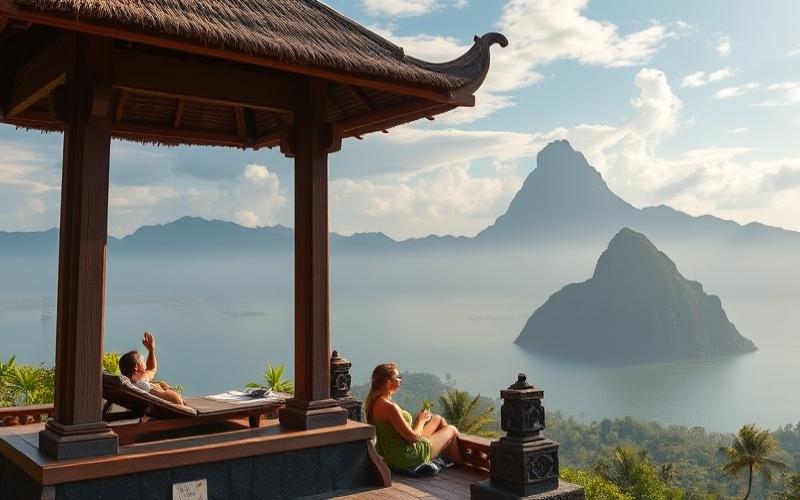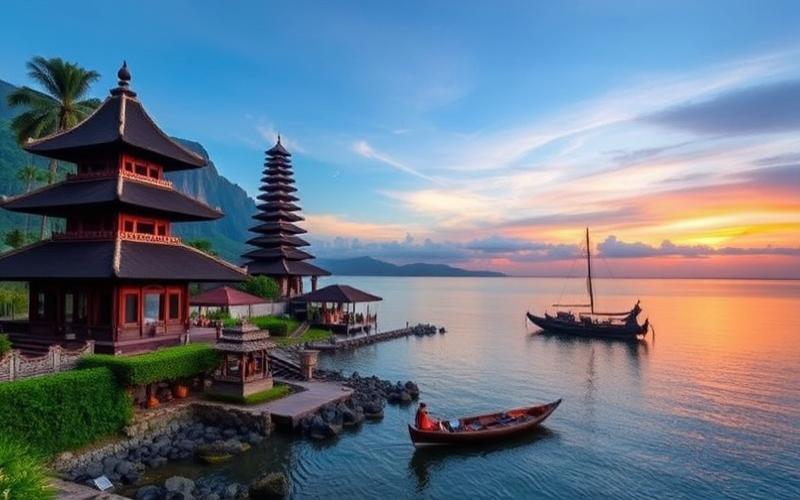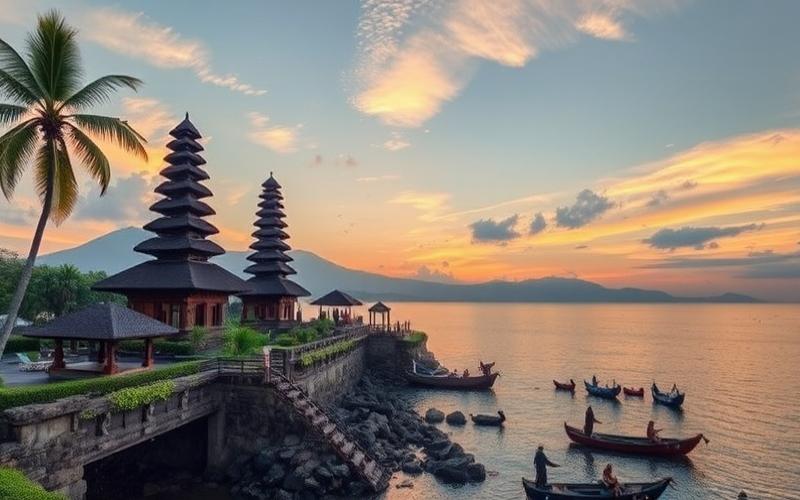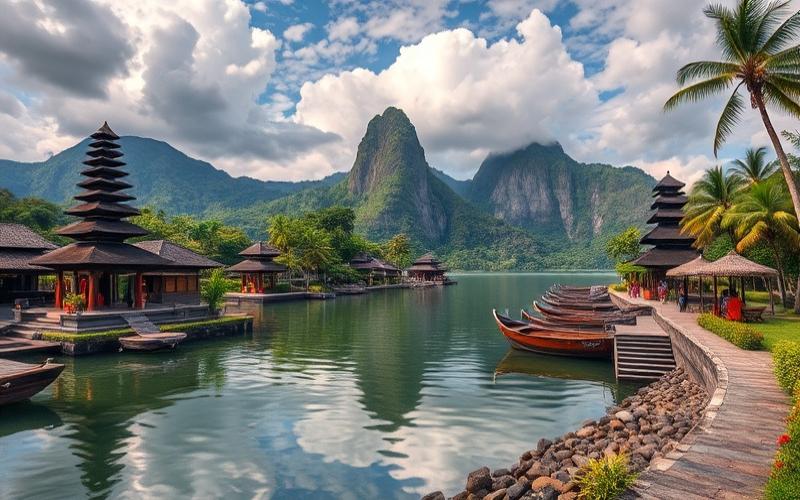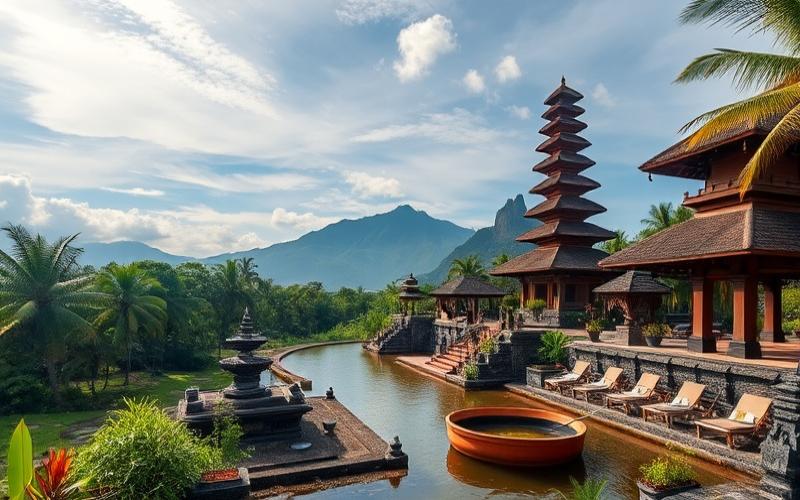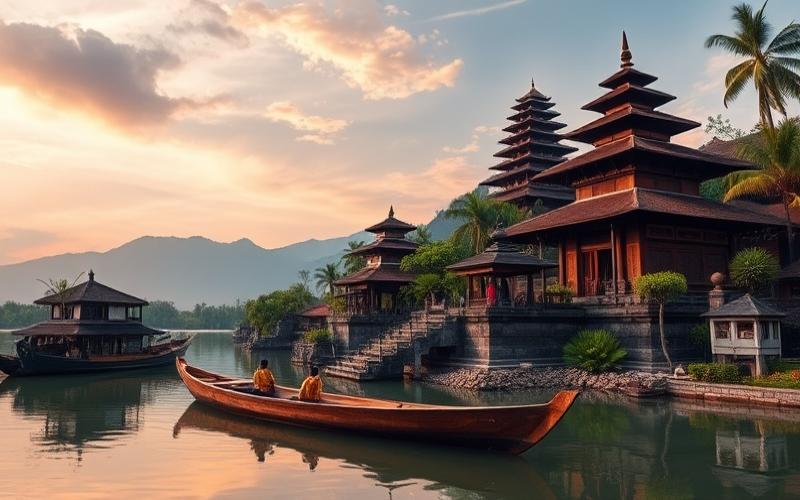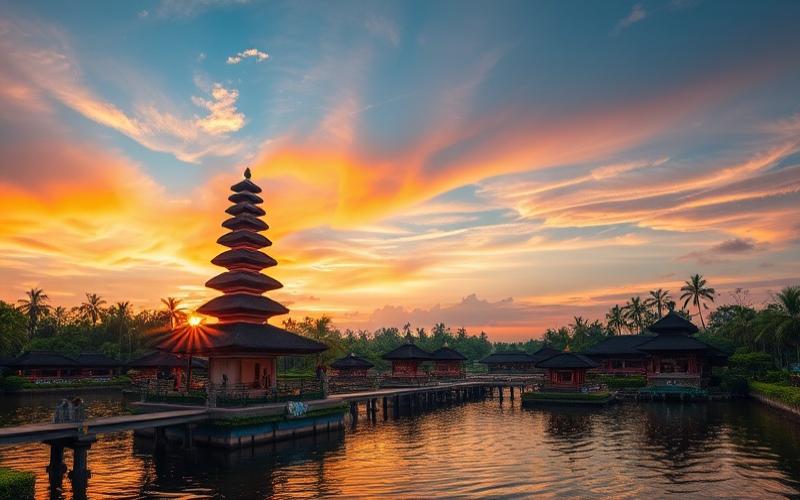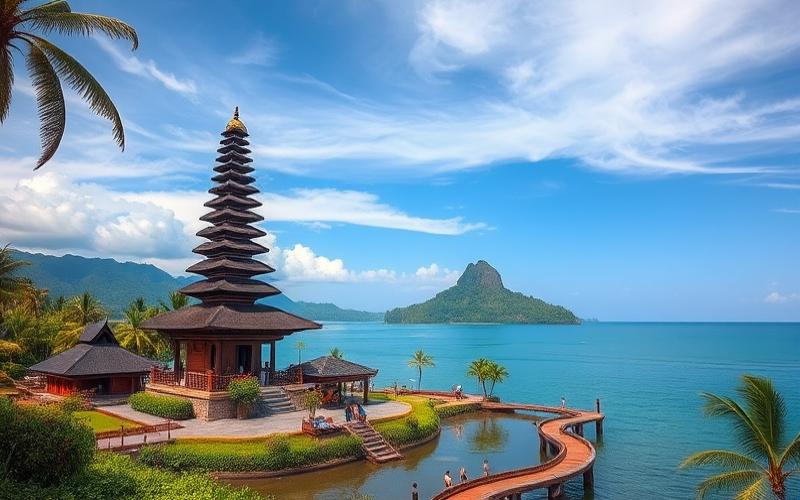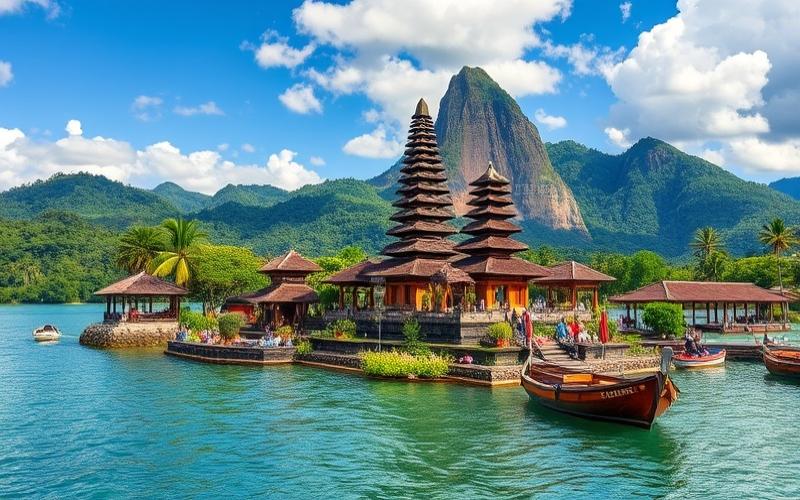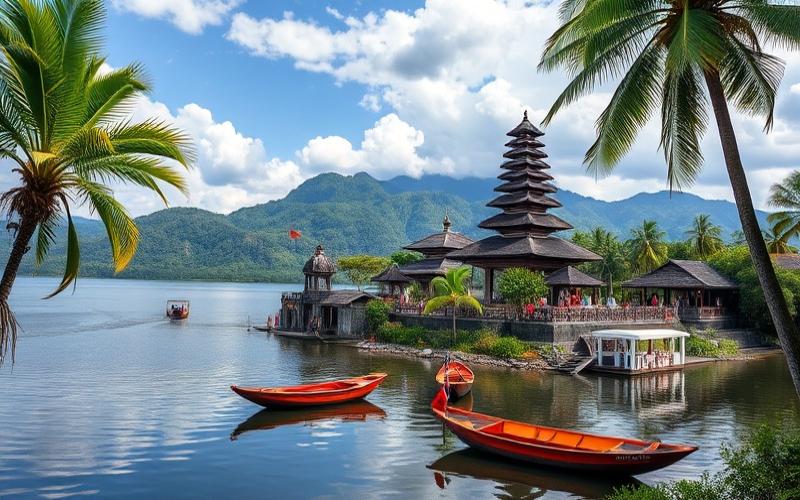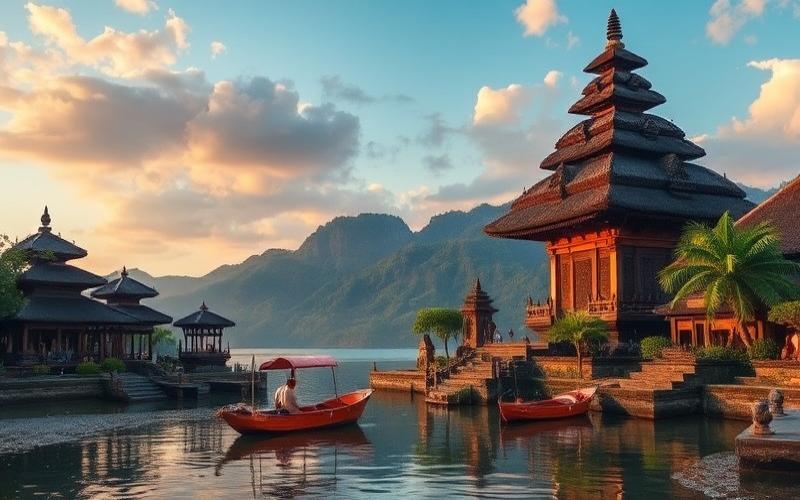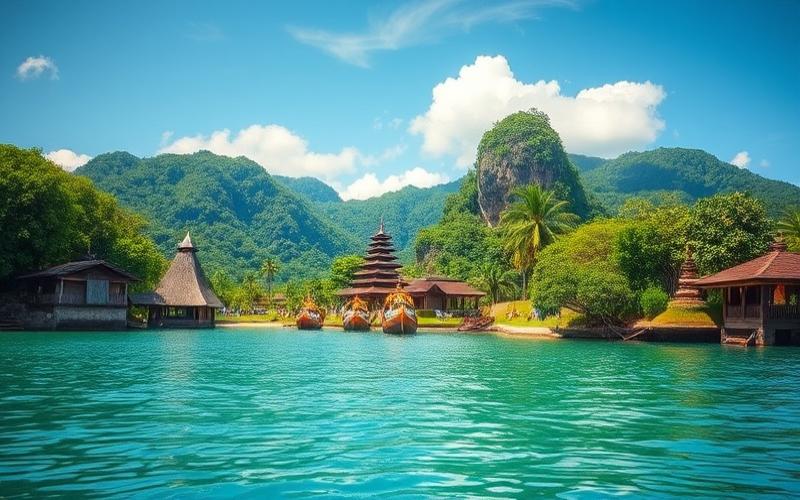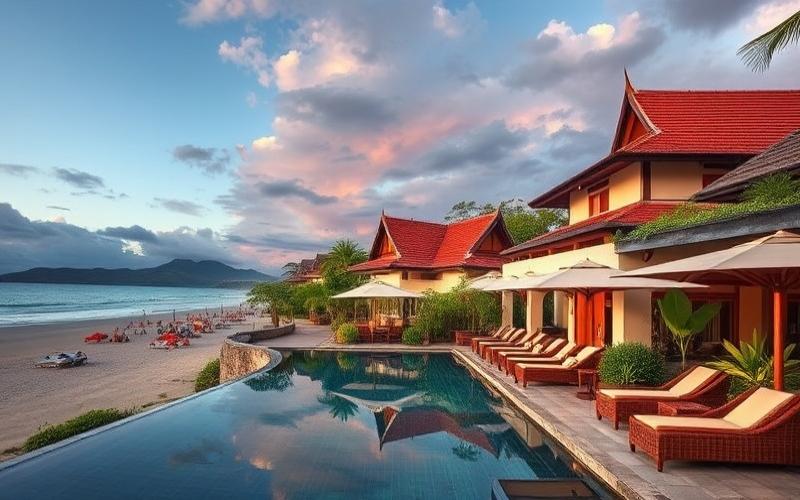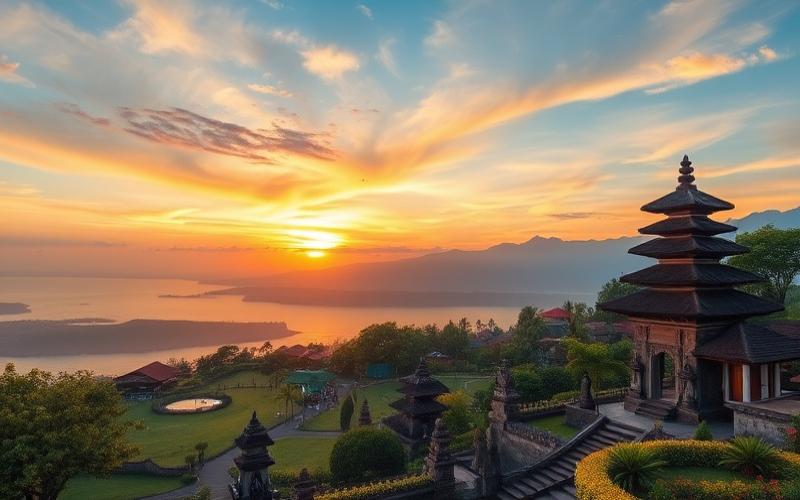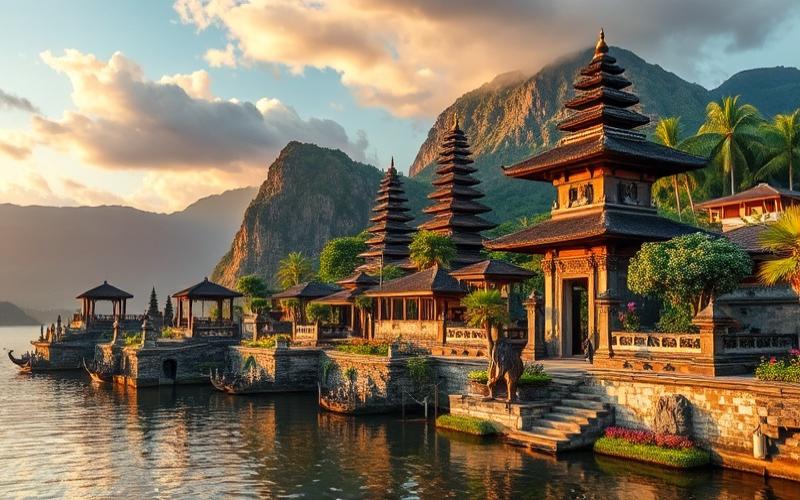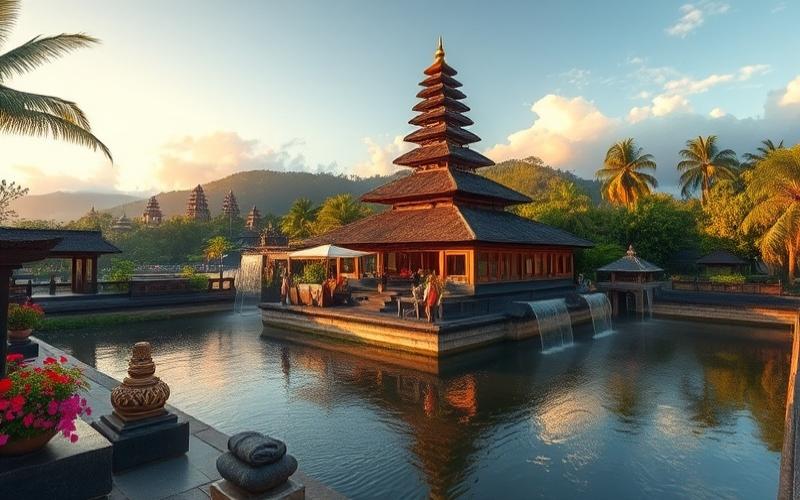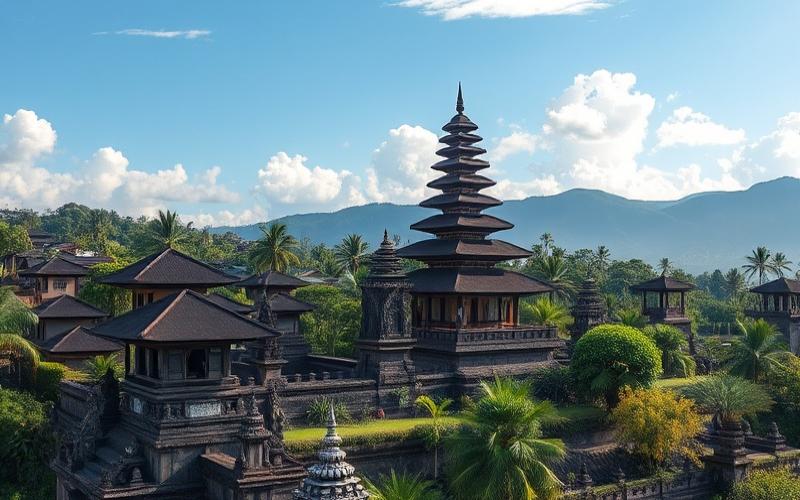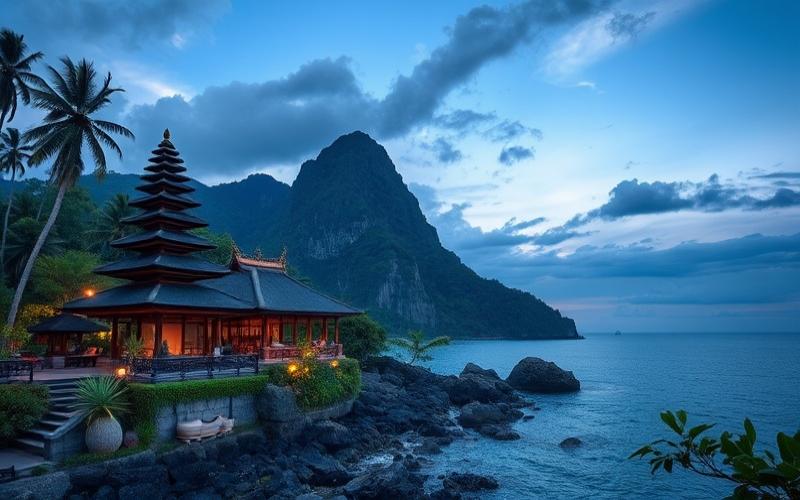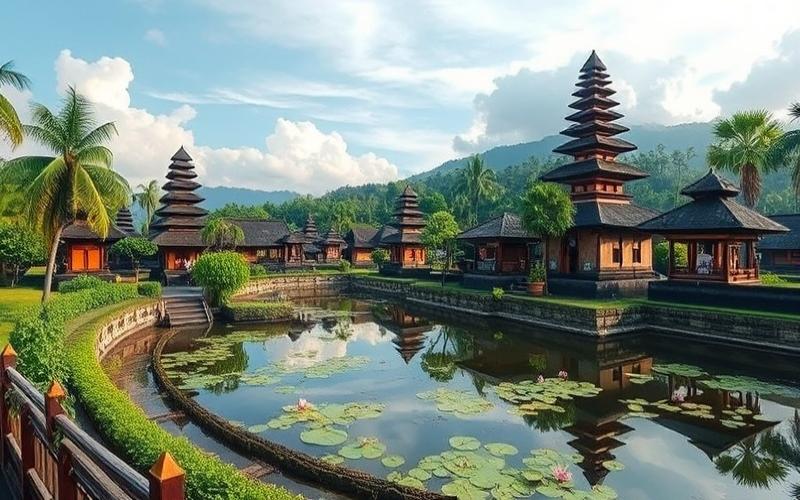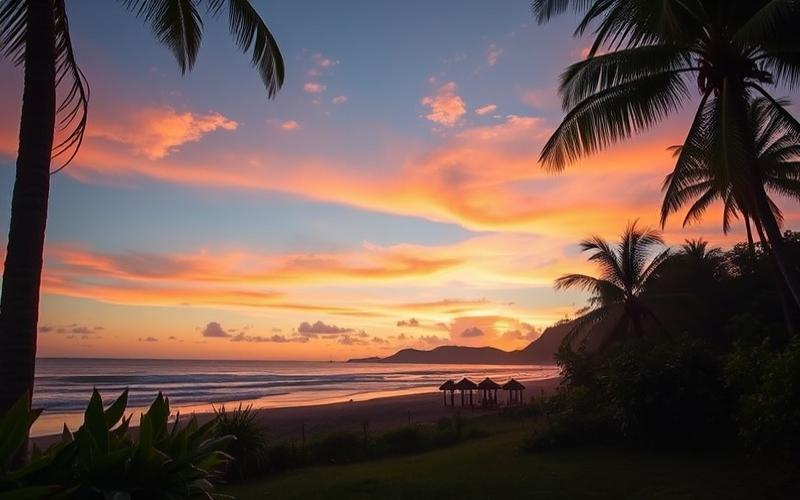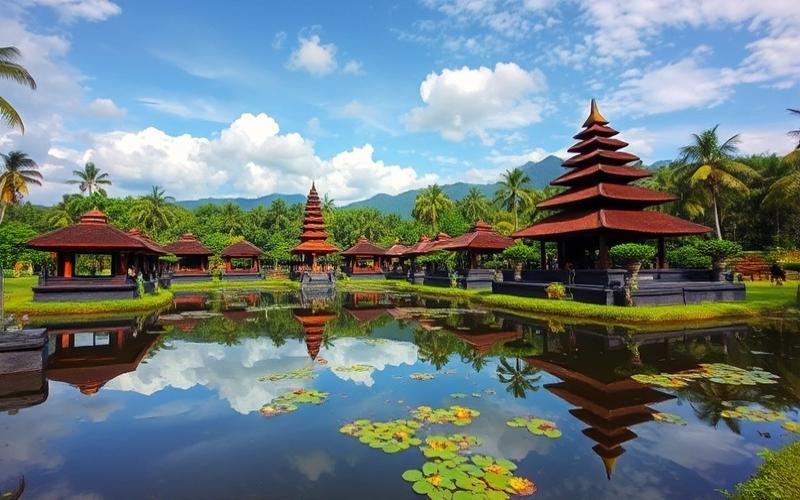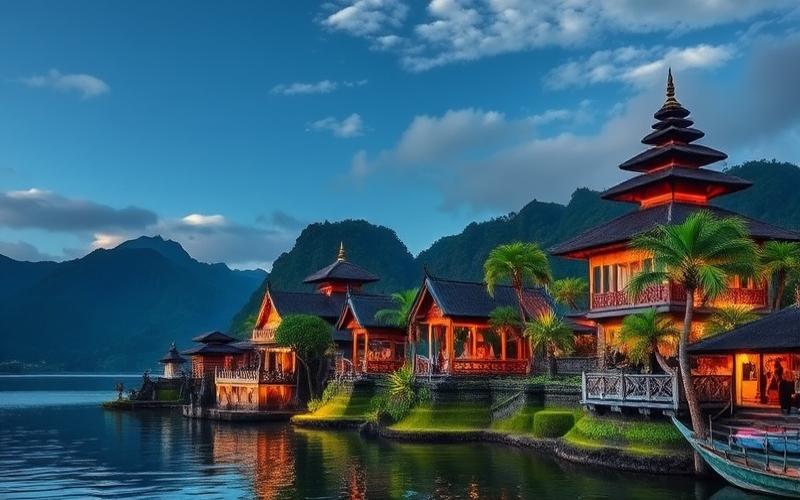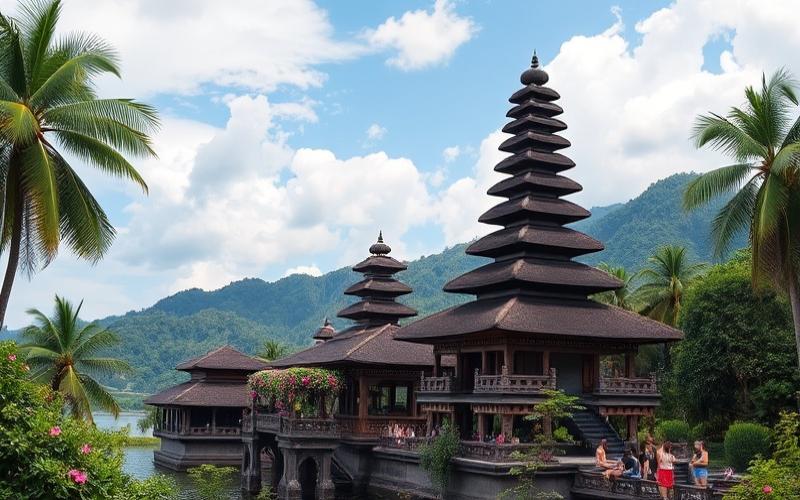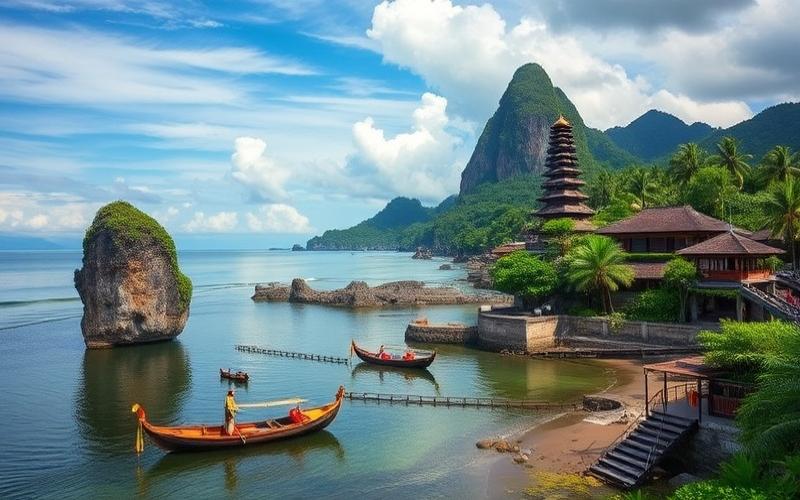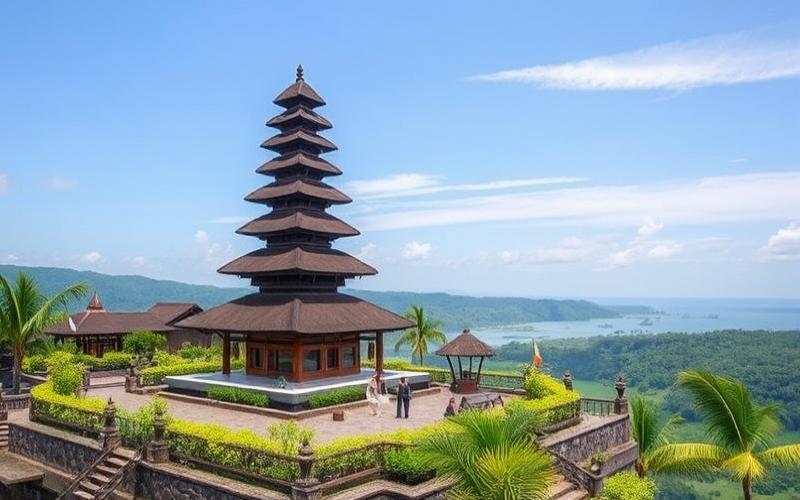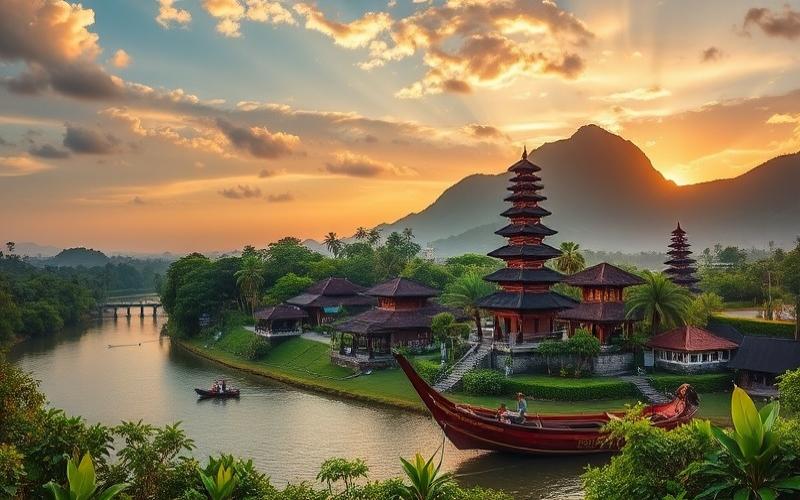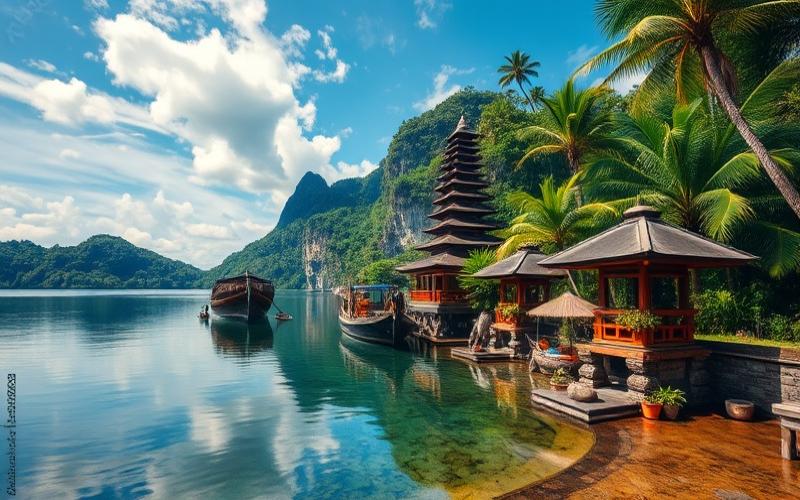
 Published on and written by Cyril Jarnias
Published on and written by Cyril Jarnias
Bali, the Island of the Gods, has long been a dream destination for travelers worldwide. But beyond its white sand beaches and terraced rice fields, the Indonesian island has become a true paradise for wealthy real estate investors. The luxury property market in Bali is experiencing remarkable growth, attracting international clients seeking exceptional living environments and lucrative investment opportunities.
With an annual real estate market growth of approximately 15% in 2024, Bali is establishing itself as a prime destination for high-end property buyers. Luxury villas, in particular, are highly sought after, offering rental yields that can reach 12% per year. This appeal is explained by the unique combination of factors the island offers: a paradisiacal natural setting, a rich and authentic culture, and sustained economic development.
The Balinese real estate market stands out for its diversity and dynamism. From modern villas with private pools to traditional properties nestled in the heart of the jungle, the offerings are vast and meet the most demanding expectations. Foreign investors also benefit from a favorable legal framework, with the possibility of obtaining long-term leasehold rights of up to 80 years.
Good to know:
The luxury real estate market in Bali shows annual growth of 15%, with rental yields reaching up to 12%. Foreign investors can benefit from leasehold rights of up to 80 years.
The Balinese Lifestyle: Luxury Properties Blending Tradition and Modernity
Luxury properties in Bali stand out for their ability to harmoniously blend traditional Balinese architecture with modern comfort standards. These exceptional homes are designed to offer a unique living experience, in perfect symbiosis with the island’s tropical environment.
Balinese architecture, with its characteristic sloping roofs and open pavilions, is reinterpreted in a contemporary style. Luxury villas incorporate noble materials such as teak wood, volcanic stone, and marble, creating an atmosphere that is both refined and authentic. Spacious, bright living areas open onto lush gardens, blurring the boundary between indoors and outdoors.
High-end amenities are standard in these exceptional properties. Infinity pools with ocean or rice field views, private spas, home theaters, and state-of-the-art kitchens are among the common features. Technology is not overlooked, with advanced smart home systems allowing total control of the domestic environment.
Sustainability is also at the heart of concerns. Many luxury villas in Bali incorporate eco-friendly solutions such as solar panels, rainwater harvesting systems, and sustainable building materials. This responsible approach meets a growing demand from environmentally conscious clients.
Luxury properties in Bali come in different categories to meet all needs:
- Beachfront villas: offering direct beach access and breathtaking ocean views
- Rice field villas: for total immersion in the Balinese countryside
- Urban penthouses: located in the most vibrant areas, combining luxury and proximity to amenities
- Private estates: vast properties offering total privacy and amenities worthy of the best resorts
Good to know:
Luxury properties in Bali blend traditional architecture with modern comfort. They often incorporate eco-friendly solutions and come in various types to suit all lifestyles.
Prime Neighborhoods: From Seminyak to Ubud, an Abundance of Choice
The luxury real estate market in Bali is concentrated in several key areas, each offering its own charm and specific advantages. Savvy investors have an abundance of choice to find the ideal location matching their expectations.
Seminyak, the jewel of the west coast, remains one of the most sought-after destinations for luxury properties. This chic and lively neighborhood attracts with its fine sand beaches, gourmet restaurants, and designer boutiques. Luxury villas in Seminyak often offer direct beach access and spectacular sunset views. Prices per square meter here are among the highest on the island, ranging between €2,500 and €3,500.
Canggu, the new trendy hotspot, attracts a younger, more stylish clientele. This rapidly developing area combines the relaxed atmosphere of a surf village with modern infrastructure and cutting-edge luxury properties. Investors particularly appreciate Canggu’s growth potential, with prices per square meter ranging from €2,000 to €3,000.
Ubud, the cultural heart of Bali, appeals to lovers of tranquility and authenticity. Nestled among rice fields and tropical forests, Ubud’s luxury villas offer a unique experience of connection with nature. Prices here are slightly more affordable, between €1,500 and €2,500 per square meter, but demand continues to grow.
Other emerging areas are also attracting investor attention:
- Uluwatu: renowned for its spectacular cliffs and secluded beaches
- Nusa Dua: a high-end enclave offering first-class infrastructure
- Tabanan: a still-preserved region, ideal for nature enthusiasts
The choice of location largely depends on the investor’s objectives. For those seeking high rental yields, tourist areas like Seminyak or Canggu are ideal. Investors prioritizing long-term capital appreciation may turn to developing areas like Tabanan.
Good to know:
Seminyak, Canggu, and Ubud are the most sought-after areas for luxury real estate in Bali. Prices per square meter range from €1,500 to €3,500 depending on location. The choice of area depends on the investor’s objectives: rental yield or long-term capital appreciation.
A Thriving Market: Trends and Outlook
The luxury property market in Bali is experiencing exceptional momentum, driven by several key factors. The post-pandemic recovery has injected new energy into the sector, with a marked renewed interest in destinations offering exceptional living environments and attractive investment opportunities.
One major trend is the growing appeal for properties offering a “wellness” lifestyle. Wealthy buyers are seeking villas incorporating dedicated wellness spaces: yoga rooms, private spas, meditation gardens. This trend reflects a broader shift in investor priorities, placing increased importance on health and well-being.
The second home market is also experiencing an unprecedented boom. More and more international buyers see Bali as an ideal destination for a vacation home, combining exoticism, comfort, and rental yield potential. This sustained demand helps maintain high prices in the most sought-after areas.
The emergence of the “workcation” concept is also having a significant impact on the market. Luxury villas equipped with high-tech workspaces are particularly sought after by a new generation of wealthy entrepreneurs and digital nomads. This trend has led to an evolution in property design, with special attention paid to connectivity and integrated workspaces.
In terms of investments, a diversification of buyer profiles is observed. While Asian investors remain predominant, there is a significant increase in European and American buyers. This internationalization of the market contributes to its robustness and resilience against economic fluctuations.
The outlook for Bali’s luxury real estate market remains very positive:
- Sustained price growth, estimated between 8% and 12% per year for the next five years
- Continuous infrastructure development, strengthening the island’s appeal
- Growing demand for eco-friendly and sustainable properties
- Emergence of new luxury neighborhoods, offering new investment opportunities
However, investors must remain vigilant about potential challenges, such as the saturation of certain tourist areas or regulatory changes concerning foreign ownership. A cautious and well-informed approach remains essential to successfully navigate this dynamic market.
Good to know:
The luxury real estate market in Bali is driven by trends like “wellness,” second homes, and “workcation.” Price growth is estimated between 8% and 12% per year for the next five years, with increasing diversification of buyer profiles.
Investing in Balinese Luxury: Opportunities and Considerations
Investing in a luxury property in Bali represents an attractive opportunity but requires a thoughtful and well-informed approach. The potential return is considerable, with rental profitability rates reaching up to 12% per year for the best-located and best-managed properties. This performance is explained by strong tourist demand and Bali’s growing popularity as a high-end vacation destination.
The legal framework for foreign investors has significantly eased in recent years, making real estate acquisition more accessible. Foreigners can now obtain long-term leasehold rights of up to 80 years, offering increased security for investments. However, it is crucial to work with experienced local professionals to navigate legal and administrative complexities.
Investment opportunities are varied and adapt to different investor profiles:
- Purchase for personal use: ideal for those seeking a luxury second home
- Rental investment: aiming to generate regular income through seasonal rentals
- Real estate development: for investors wishing to participate in villa or hotel complex construction projects
- Buy-to-sell: profiting from rapid property appreciation in certain areas
Rental management represents a crucial aspect for maximizing return on investment. Many owners opt for professional management services that handle marketing, maintenance, and customer relations. These services may charge between 15% and 25% of rental income but ensure optimal management and free the owner from all operational constraints.
It is important to consider certain Bali-specific factors when investing:
- Tourism seasonality, with peak occupancy from July to August and December to January
- Maintenance costs, which can be high due to the tropical climate
- Natural risks, such as earthquakes or volcanic eruptions, requiring adequate insurance
- Increasing competition in the luxury rental market, requiring a differentiation strategy
Sustainability and eco-responsibility are becoming increasingly important criteria for investors and tenants. Properties incorporating eco-friendly solutions (solar energy, water recovery, sustainable materials) benefit from a competitive advantage and better long-term valuation.
Finally, geographic diversification within Bali itself can be a wise strategy. By investing in different areas (coast, inland, urban zones), investors can balance their portfolio and minimize risks related to demand fluctuations in certain regions.
Good to know:
Investment in luxury real estate in Bali can offer rental yields up to 12% per year. Foreigners can obtain leasehold rights of up to 80 years. Professional rental management, consideration of seasonality, and integration of sustainable solutions are key success factors.
Disclaimer: The information provided on this website is for informational purposes only and does not constitute financial, legal, or professional advice. We encourage you to consult qualified experts before making any investment, real estate, or expatriation decisions. Although we strive to maintain up-to-date and accurate information, we do not guarantee the completeness, accuracy, or timeliness of the proposed content. As investment and expatriation involve risks, we disclaim any liability for potential losses or damages arising from the use of this site. Your use of this site confirms your acceptance of these terms and your understanding of the associated risks.

